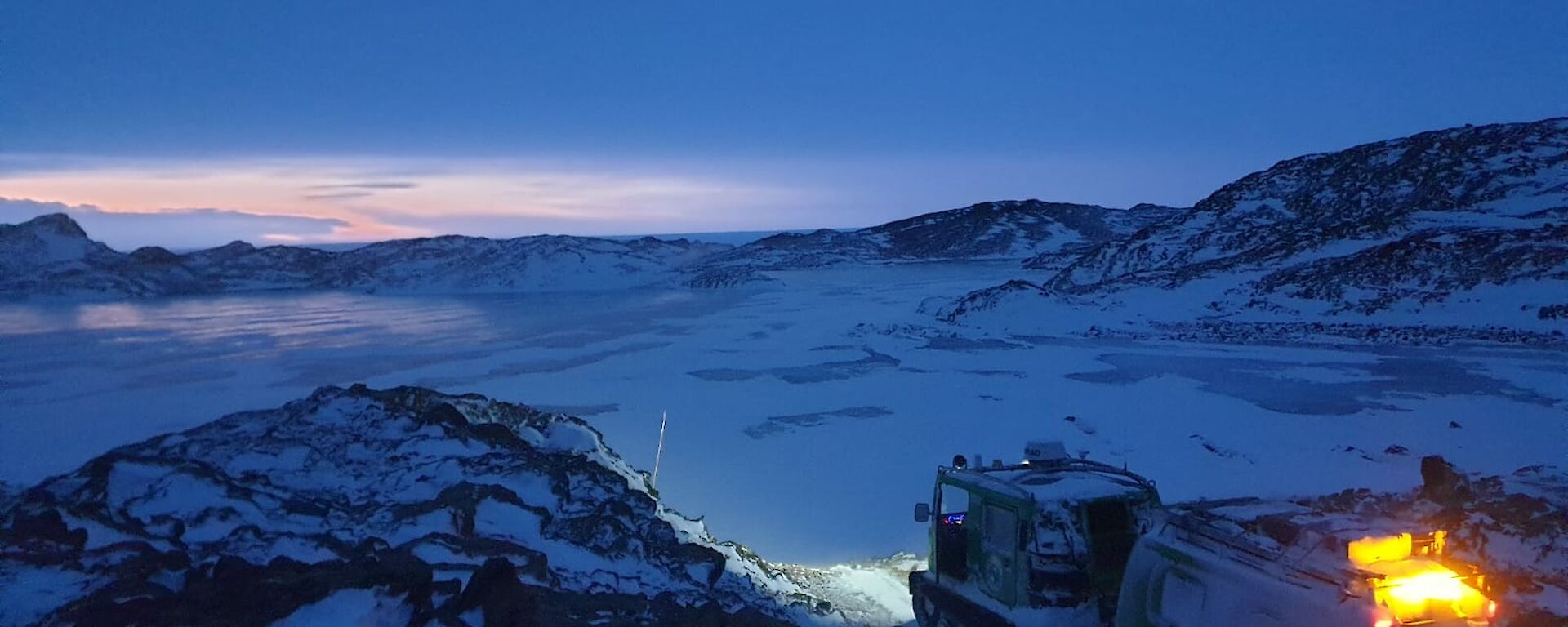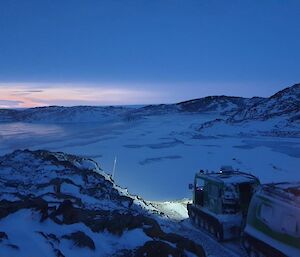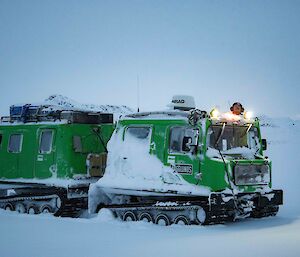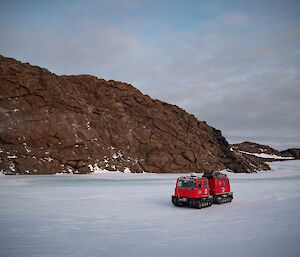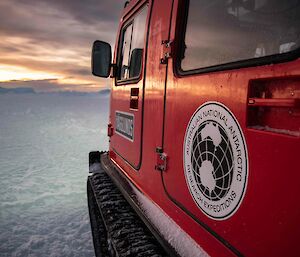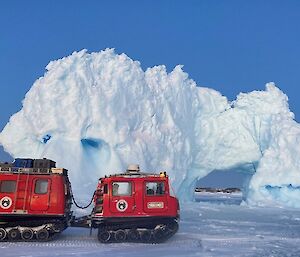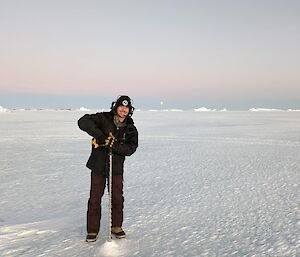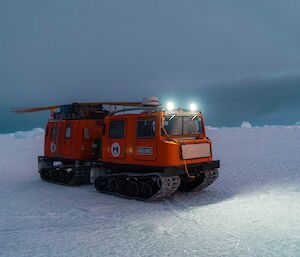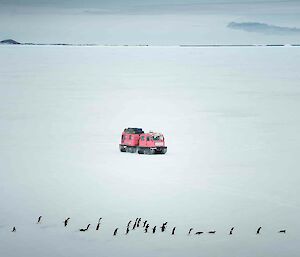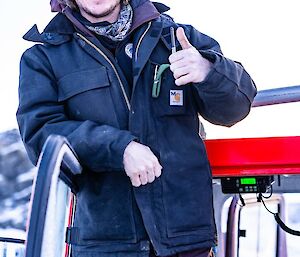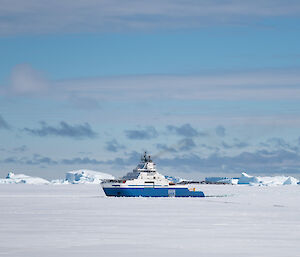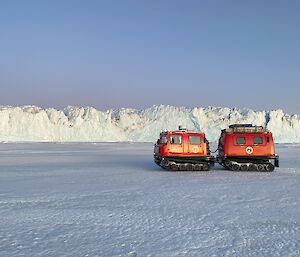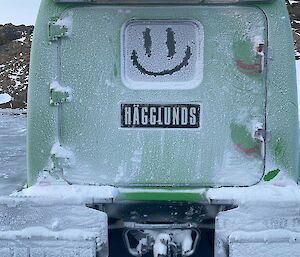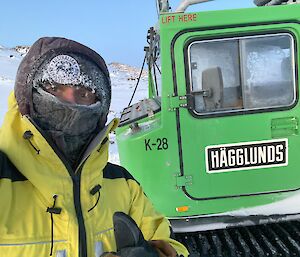Hilux for sale, selling due to upgrade to Hägglunds.
The primary means of transport around the Station Operating Area (SOA) is the mighty Hägglunds or Hägg for short. The highly capable vehicle is the number one pick for off-station trips. Powered by a Cummins 4.5 litre, 4 cylinder, 160 horsepower engine, it weighs 4.5 tonnes and is propelled forward by four hydraulically steered tracks, which disperse the load over the sea ice. The Hägg is in its element on the frozen continent.
Loaded with safety features: dual fuel takes, spotlights, winch, GPS navigation, sonar (to avoid icebergs in white out conditions), UHF radio and of course the fact that it can float and actually drive through water! Just like your boat, make sure the bungs are in and your doors sealed well and the bilge pumps will ensure it remains floating and not on the sea floor in the unlikely event of an ice-breakthrough.
Sea ice must be a minimum of 600 mm to allow for safe passage for a Hägg (200 mm to walk on). In order to ensure the depth and safety we regularly drill with a cordless power drill and drop a measuring tape down. Changes in sea ice colour, fast flowing water areas, as well as tide cracks are usually a warning to be a bit more cautions, although the most suspect areas are well marked on the maps. Something I never thought of before stepping onto Antarctica was how the sea ice meets the land, with an average tide change of one metre, sometimes up to 1.5 m. Getting the Hägg on and off the sea ice is usually the trickiest part as the high tides allow water above the ice, making soft areas, whilst the low tides drop the ice sheet, causing large, often unavoidable, ice chunks.
In order to leave station and venture out to one of the huts around the SOA a trip form must be completed and signed off by both the Station Leader and Field Training Officer at least three days prior. This is to ensure our intentions are known and any hazards can be avoided. The back of the Hägg is loaded up with supplies for the trip; food, water, survival packs, generator (to pre-warm the Hägg when it gets turned off), a selection of cheeses and a tasty beer or two, whilst the front is reserved for up to four lucky expeditioners.
Within one minute of leaving station you’re out on the sea ice, a couple of minutes after that you’re passing your first islands. The landscape around you is scattered with a multitude of various icebergs, some bigger than houses, some you accidently run over (oops), whilst the sea ice rapidly changes in both colour and smoothness. Sometimes it’s like a perfect autobahn, other times it’s in worse condition than the Gibb River Road.
After a few hours of iceberg tours, fjord exploration, scrambling up hill tops and all out marvelling at this unique place, it’s time to thaw out for the evening in one of the huts and recount the days adventures with your mates. Crack out the cheese platter and some hopefully not frozen beers and pass the next 18 hours of darkness and -30°C weather with some yarns and laughs before doing the trip back home to Davis tomorrow.
Mick Cloke, Plumber, Davis Station

